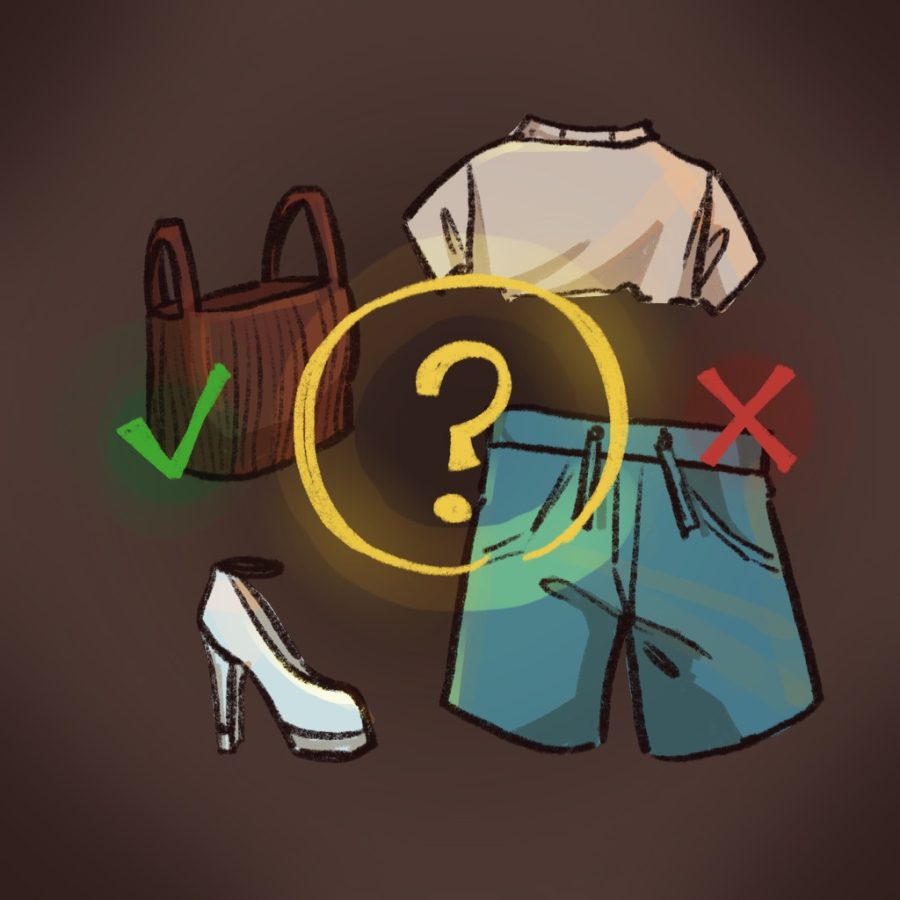School Dress Codes Should Be Abolished
March 7, 2023
School dress codes are biased against women and people of color, and being unfairly dress coded is a frustrating reality for many teens. The intent behind dress codes is allegedly to keep students ‘safe.’ In reality, these dress codes are targeting women and sexualizing their bodies. They also target people of color, often banning certain hairstyles and head coverings that are culturally significant. LGBTQI+ students are often targeted by these policies, and are not allowed to wear the clothes they feel comfortable in. According to US News, “While the reasons for instituting dress codes often revolve around equity and safety, research shows these policies affect students unequally, with girls and students of color disproportionately facing consequences. In many cases, enforcement makes these students feel less safe, not more.”
Dress codes hinder students’ ability to express themselves and feel comfortable. The argument that dress codes should improve focus and productivity are false; students should be able to wear what they are comfortable with and have a personal style. According to US News, “The result of these policies, the report found, is that this subset of students often faces more disciplinary action related to their attire, which in turn causes them to be removed from class more frequently and miss out on more instructional time.” Removing students from class and blaming it on dress code policies is another example of dress codes disrupting learning instead of improving it. Pulling students out of class embarrasses them and opens the possibility of being bullied by peers, highlighting the irony and redundancy of dress code policies in schools.
Dress codes also make students of color feel discriminated against for things out of their control. According to The Washington Post, “‘Students are being denied educational opportunities because of what’s on their head … not in it,’ said Michaele Turnage Young, senior counsel at the NAACP Legal Defense and Educational Fund. ‘We certainly shouldn’t be denying students an equal opportunity to get an education because their hair is curly.’” This shows the demeaning nature of dress codes. Students should not feel like they need to look a certain way to be respected in an educational setting. This brings up the point of low-income families, who may only have hand-me-downs or clothes that do not fit the dress code standards. Dress codes draw more attention to what people are wearing, which is the opposite of the intended purpose. This increase in attention causes bullying or judgement of what others are wearing, which again, is the opposite of keeping students safe at school.
School dress codes create more opportunities for inappropriate student-teacher conduct. According to Education Week, “About 60 percent of dress codes make staff members measure students’ bodies and clothing to check adherence to codes—which may involve adults touching students.” These interactions lead to students feeling unsafe and uncomfortable around teachers. Measuring students’ clothing to ensure enough coverage also implies that their bodies are innately sexual and ‘distracting.’ It is extremely degrading and morally unacceptable to continue to have racially biased, harmful dress code policies at high schools. Dress codes have no place in learning environments.




Cassadee • Nov 14, 2024 at 12:04 pm
This is so for real I litterally can’t even wear shorts or skirts
Cassadee • Nov 12, 2024 at 11:03 am
i agree with this so well i litarly cant were anything like shorts or skirts appirently (sorry for spelling errors) its “to short”
Judah • Oct 12, 2023 at 6:13 pm
This is dumb. I mean truly. I am a High School male student who has to stare at the floor and/or eye level or everywhere else I look is a girl wearing what is essentially just a bra and spandex shorts that make Speedos look long. This whole article just feels like a progressive reach. Dress codes never used to be a point of interest because everyone had a certain respect for how they dressed and interacted with others.
Really what does this have to do with minorities by means of “people of color” and “LGBTQI+”? One’s ability to express themselves is not at all restricted to what they wear. The true expression of oneself is their personality and spirit, not their outward expressions or looks. How are they more exempt from the rest of society?
Also, when referring to “adults touching students”, that is a completely different issue in itself. I mean dress codes do not give teachers the okay to touch students in any manner. That said, if one has to measure or test how close they are to violating a dress code, they have already passed it.
The new ever-growing liberal hive-mind society that seeks to take control of the world has utterly destroyed mankind’s basic respect for one another, and this article reflects that.
YADIELYS GARCIA • Oct 11, 2023 at 5:16 am
Alll of that was sooooooooooooooooooooooooooooooo TRUE!!!!!!! WHY ARE SCHOOLS DISCRIMINATING CHILDREN OF ALL COLORS THIS IS HIGHLY OFFENSIVE TO THE USA BILL OF RIGHTS AND THE RIGHTS OF STUDENT PROTECTION!!! THIS IS PRACTICALLLY ILLLEGAL!! WHY IS BIDEN NOT PAYING ATTENTION TO STUDENTS OF ALL COLORS AND OF ALL SCHOOLS IN NEED!! AREN’T WE USA STUDENTS AS WELL?!?!?!?!